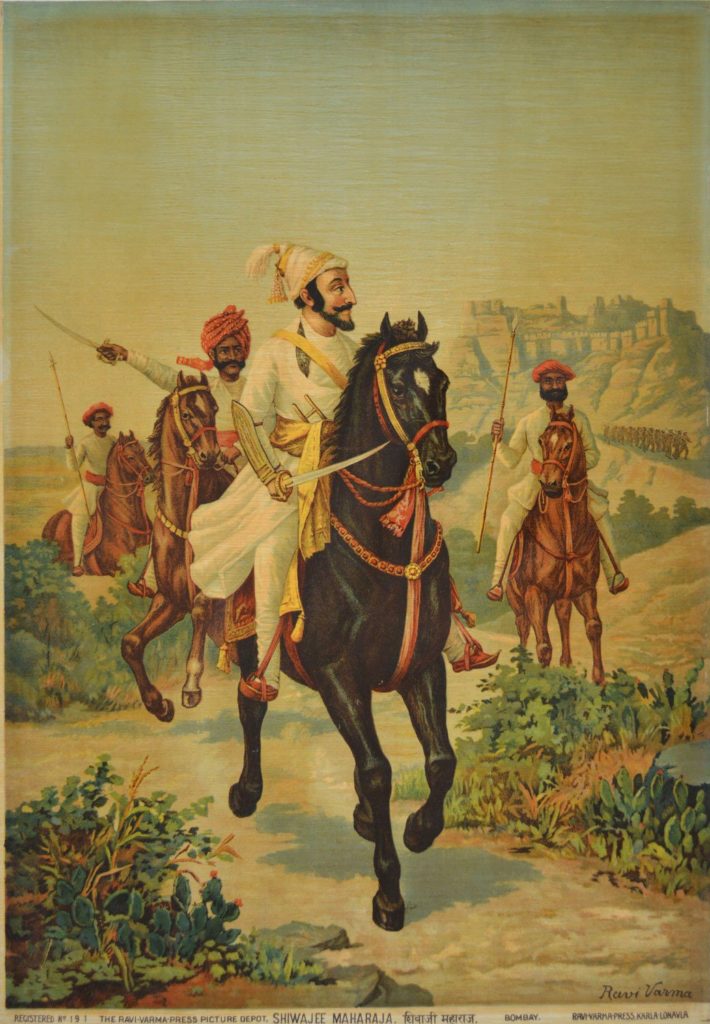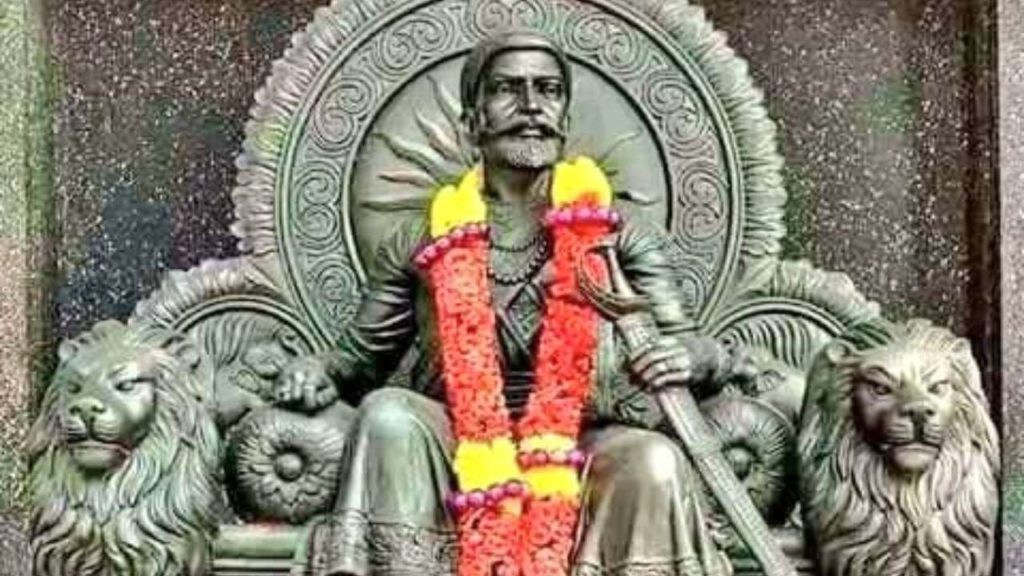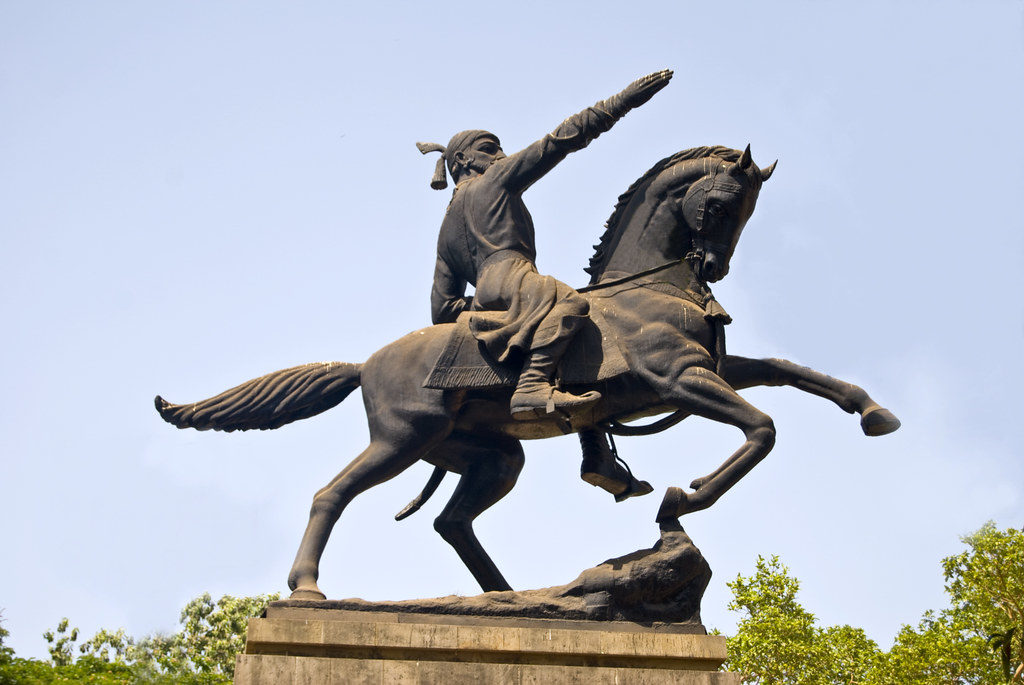Chhatrapati Shivaji name is paramount among medieval Hindu rulers. He was a skilled general as well as a qualified ruler. His entire life was spent in struggles as a soldier, but he introduced an enlightened ruler by implementing an excellent system of governance.
The main objective of his rule was the welfare of his people. He did many things for the welfare of his peoples and by his efficient administration, the Marathas reached the pinnacle of progress. There are very few rulers in India history which can be compared with the achievements of Shivaji.
Shivaji was born in 1672 in the hill fort of Shivner. His father’s name was Shahji Bhonsle and mother’s name was Jijabai. Shahji Bhonsle abandoned Jijabai and married another woman named Tukabai. Shivaji started living in Pune under the protection of his mother Jijabai.

Jijabai was religious and scholar woman. She made Shivaji brave and courageous by telling stories of Ramayana, Mahabharata and ancient Hindu heroes. From grandfather Konadev, Shivaji learned the art of weapons and the art of horse riding.
Konadev was a strong supporter of Hinduism and Hindutwa. His contact also led to the emergence of Hindutva spirit in Shivaji, and he decided to establish an independent Hindu state. It required well-qualified helpers to establish an independent Hindu state. The courageous youths of Malwa region supported Shivaji and also joined the army, therefore, he started his victory campaign.
The early victory of Shivaji
Shivaji first took over the Toran fort of Bijapur in 1646 and then won Conna, Durga etc. After a few months, he won the fort of Purandar. Due to his winnings, his father Shahji Bhonsle was imprisoned by the Sultan of Bijapur in 1948 AD.
For this reason, Shivaji remained calm for a long time, but in 1656 AD he conquered the Javali states. Due to this he got the opportunity to expand the kingdom towards the south-west and got good young soldiers to fight.
After the Javali victory, Shivaji won Raigad and made it his capital. He did not want to get entangled with Aurangzeb in the south. That’s why he agreed to make a treaty with him. But this treaty could not be reached because Aurangzeb went to Delhi due to the succession quarrel after that Shivaji won the Konkan region of Bijapur.
अकबर की शासन प्रणाली और धार्मिक निति केसी थी ?

The accession(Rajyabhishek) of Shivaji-
Shivaji was crowned in 1674 in Raigad. He assumed the title of Chhatrapati and declared himself the protector of the Gau Brahmin.
Shivaji’s State Expansion
Shivaji established his empire, with the Surat Agency and Dharampur State in the north, Karber Province in the south, Baghlan, Kolhapur and Tribhanga Coast in the east, and part of western Karnataka.
Shivaji’s Administration
Shivaji name comes among the great governance managers of the world. Rawlinson says, _ “Like all great army heroes, Shivaji was also a great ruler because the same quality that produces a capable commander makes a successful organization and is also notable for politicians.”
Central Government
Shivaji’s rule was autocratic. All the powers of the state were in the hands of the king. He used to decide the appointment of big employees, the system of expenditure of the state, war and treaty.
The cabinet of eight ministers was Ashtapradhan to assist him. These ministers were –
- Chief Head
- Amatya (Department of Self-Government)
- Minister (Relation to the proceedings of the King and the Court)
- Secretary (Relation to State Papers)
- Sumant (Parrashtra)
- Chief of Army Staff
- Donor
- Justice.
All ministers except the Chief of Army Staff were Brahmins. The Prime Minister was called Chief Pradhan or Peshwa. He looked after all the states.
Ashtapradhan-
Chhatrapati Shivaji did not allow any ministerial post to be transcendental. In ‘Ashtapradhan’, the post of Peshwa was the most important honour.
Peshwa used to be reliable of the king. Shivaji used not to interfere with the priest and accounting department, probably due to his lack of experience in these fields.
Shivaji had prepared a dictionary of parliamentary terminology called ‘Rajyavarta Kosh’ by selected experts under the supervision of Raghunath Pandit Hanumantya. A brief description of Shivaji’s Ashtapradhan is as follows.
Peshwa –
It looked after the administration and economy of the state and took over the reins of the state in the absence of the king. His salary was 15000 per year.
मुहर्रम को मुस्लिमों के गम का पर्व क्यों कहा जाता है ?
Sir-e-Naubat (Commander) –
Its main function was to recruit soldiers in the army.
Dabir or Sumant (External Affairs Minister) –
Its main function was to welcome the Rajputs from abroad and to get advice and consultations etc. from the king in the proceedings of the treaty related to foreign countries.
Sadar or Panditrao –
Its main task was to set the date for religious works, to arrange punishment for those who do wrong and to corrupt religion, to make donations among the Brahmins and to improve the conduct of the subjects. It was also called the Donor.
Judge
The judge had the right to hear and decide all types of military and civil lawsuits. Apart from the last two officers – ‘Panditrao’ and ‘Judge’, all the officials of Ashtapradhan had to take part in the military proceedings from time to time in appropriate rights.
All the chiefs were Brahmins except the commander. Apart from these eight heads, ‘Chitnis’ and ‘Munshi’ were also important persons who looked after the correspondence of the state.
Provincial Governance
The territories which were not directly controlled by Shivaji were divided into provincial. Shivaji had three provinces in his kingdom. Their managers were Subedars or Provincials. For whose help Ashtapradhan was also created in the province. The provinces were divided into Parganas and Parganas into villages.
Judicial System
Shivaji’s judicial system was based on Hindu-religious scriptures. The judges analyzed the rules with the help of the Pundits, and both the foreclosure and the civilian were seen. Patel was also another officer for foreclosure. The village Panchayat used to watch small cases in the village.

Army
Shivaji’s army was large and well-organized. At the time of his death, his army consisted of 40 to 50 thousand cavalries, 1 lakh infantry, about 2000 camels, 1260 elephants, 200 warships and 80 towers.
The entire army was divided into several categories. The ‘Ashwrohi’ army was the youngest ‘Paltan’ with 25 soldiers. Its head was ‘Hawaldar’. There used to be a Jumaldar above 5 Hawldars, a Hajari over these Jumladars and a Panchhajari over a thousand.
Similarly, there were several categories in the infantry. Among them also were Hawaldar, Jumladar, Hazari, Panchajhari etc.
The artillery was not organized, in its operation, they used to take the help of foreigners. The Chief of the Army was the Chief of Army Staff, Sir-e-Naubat.
There was also an Intelligence Department to track the activities of the enemy. There were people of different caste and religion in the army. The soldiers were paid in cash. Maratha soldiers were experts in the Guribhalla war.

Economic system –
The land was measured, and 1/6 of the yield was taken as a tax. Shivaji was very generous towards the farmers. The Choutha Tax used to collected from neighbouring states. Import and export were taxed. Another means of income of the state was Sardeshmukhi tax which used to go to the centre. It used to be 1/10 of the income tax of entire states.
Fortification
The fortification system was prominent during Shivaji’s reign. There were about 280 fortifications in his possession. Three officers used to arrange for the fort. The fort was like a mother for the peoples because at the time of the invasion people used to take refuge in the fort.
Married Life of Chhatrapati Shivaji
Shivaji did 8 marriages to expand his empire and unite the Maratha Chieftains. He married first to Saibai on 16 May 1640 in the Red Fort, Pune. He was having a very serious relationship with her. Sambhaji Raj, the firstborn son of his first wife, sat on the throne.
Evaluation of Shivaji as ruler
He was not only the creator of the Marathas but also the most creative genius of medieval India. From the point of view of governance, they are counted among the great rulers of the world. Regarding his rule Doctor. RC Mazumdar says, “He was not only a fearless soldier and a successful conqueror but also a great ruler for his people. Despite being an autocratic ruler, he introduced generosity and humanity to the employees and subjects. His system of governance was impeccable ” |
According to Dr Ishwari Prasad, Shivaji saved the Marathas from the oppression of the Mughals by uplifting the Maratha power and even in the war period, established institutions like the Mughal emperor, notwithstanding their great culture and well-organized governance. To install.
Chhatrapati Shivaji’s Death
After being ill for three weeks, he died on 3 Aprile 1960 in Raigad.
Conclusion
In this post, you got the information about the early victory of Chhatrapati Shivaji Maharaj, the accession(Rajyabhishek) of Shivaji, Shivaji’s state expansion, Administration, Judicial System and Asthpradhan. I hope this article was helpful for you to know about Chhatrapati Shivaji Maharaj. If you liked this article, let me know in the comment box.